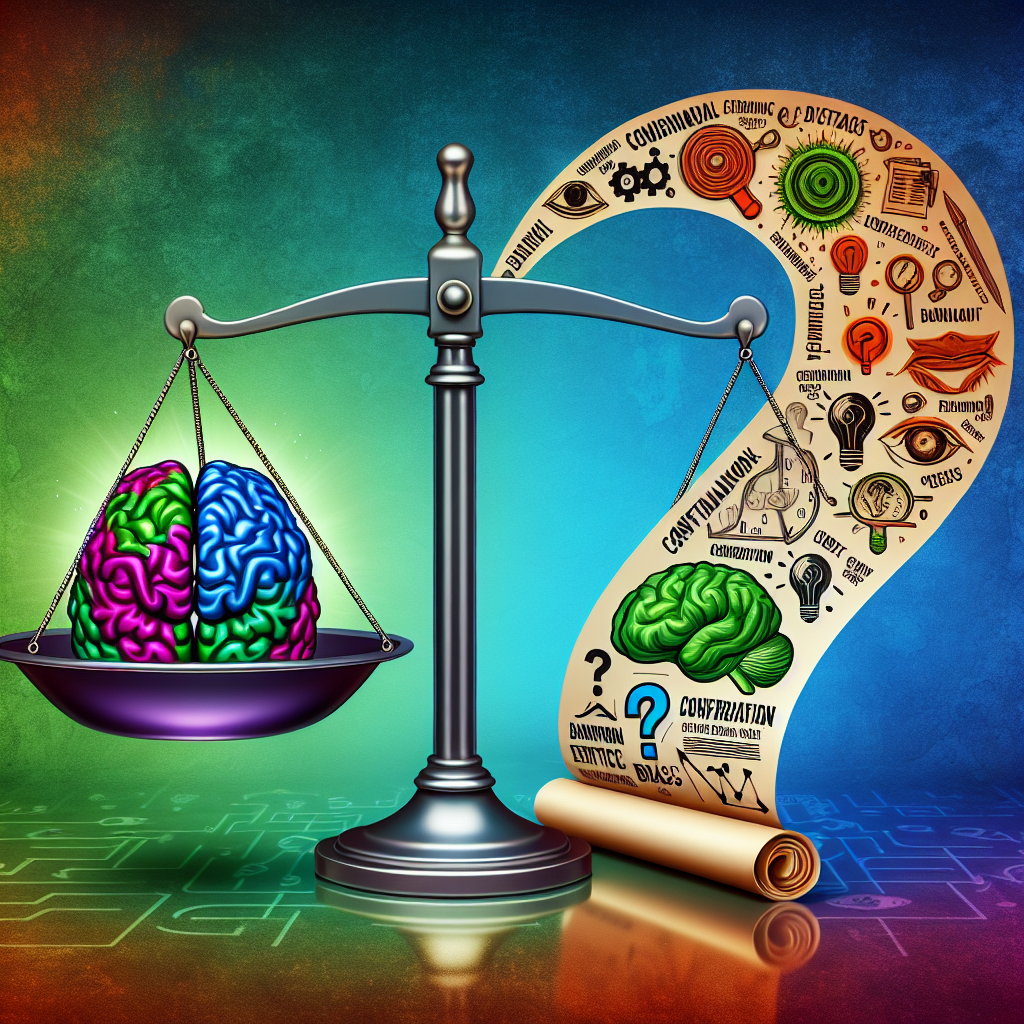Understanding the Role of Cognitive Biases in Decision Making
When it comes to decision-making, most people like to think of themselves as rational beings who carefully weigh the pros and cons before arriving at a logical conclusion. However, the reality is far from this idealized version of decision-making. In fact, our decisions are often influenced by a variety of cognitive biases that can lead us astray.
Cognitive biases are mental shortcuts that our brains use to process information quickly and efficiently. While these shortcuts can be helpful in making fast decisions, they can also lead to errors in judgment and decision-making. By understanding these biases, we can become more aware of how they influence our decisions and take steps to mitigate their effects.
One of the most well-known cognitive biases is confirmation bias. This bias occurs when we seek out information that confirms our preexisting beliefs and ignore information that contradicts them. For example, if we believe that a certain dietary supplement is effective, we may only seek out studies that support this belief and dismiss any studies that suggest otherwise.
Another common bias is the availability heuristic, which occurs when we base our judgments on information that is readily available to us. For example, if we hear about a plane crash on the news, we may become more afraid of flying even though statistically, flying is one of the safest modes of transportation.
The anchoring bias occurs when we rely too heavily on the first piece of information we receive when making decisions. For example, if a car salesman tells us that a car is priced at $30,000, we may base our decision on this initial figure even if it is higher than the car’s actual value.
The sunk cost fallacy is another cognitive bias that can impact decision-making. This bias occurs when we continue to invest time, money, or effort into a project or decision simply because we have already invested in it, even if it is no longer rational to do so.
These are just a few examples of the many cognitive biases that can influence our decision-making. By becoming aware of these biases, we can learn to recognize when they are at play and make more informed decisions.
FAQs
Q: Can cognitive biases be overcome?
A: While cognitive biases are a natural part of human cognition, they can be mitigated through awareness and mindfulness. By being aware of the common biases that influence our decisions, we can take steps to counteract their effects and make more rational choices.
Q: Why do cognitive biases exist?
A: Cognitive biases are thought to be evolutionary adaptations that helped our ancestors make quick decisions in dangerous situations. While these biases were helpful in the past, they can lead to errors in judgment in modern-day decision-making.
Q: How can I recognize when cognitive biases are influencing my decisions?
A: One way to recognize cognitive biases is to take a step back and consider alternative perspectives before making a decision. By seeking out diverse viewpoints and challenging your own assumptions, you can reduce the influence of biases on your decision-making.
Q: Are cognitive biases always negative?
A: While cognitive biases can lead to errors in judgment, they can also be helpful in certain situations. For example, the availability heuristic can help us make quick decisions in emergencies, while the anchoring bias can help us negotiate better deals.
In conclusion, cognitive biases play a significant role in our decision-making processes. By understanding these biases and their effects, we can become more aware of how they influence our choices and take steps to mitigate their impact. By challenging our assumptions, seeking out diverse perspectives, and being mindful of the biases that may be at play, we can make more informed and rational decisions in our everyday lives.




Leave A Comment